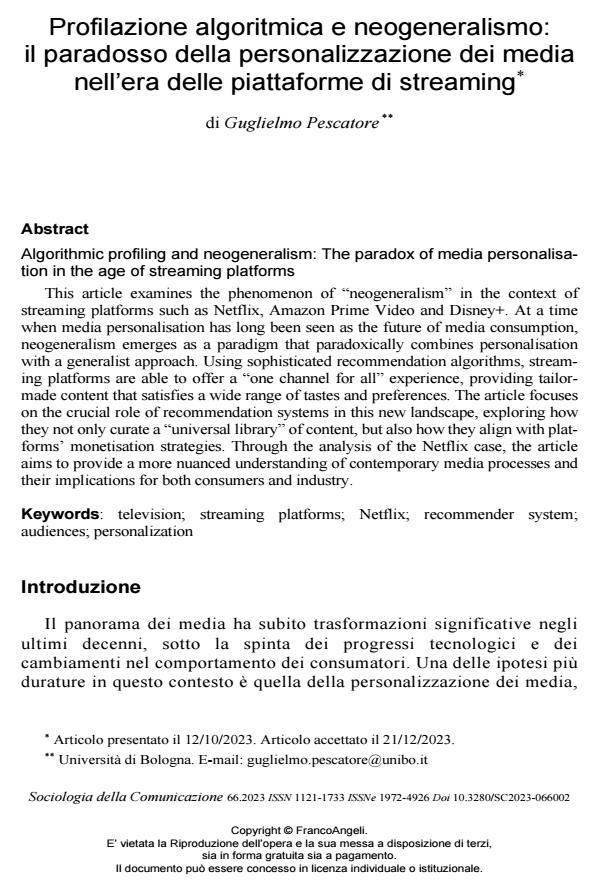Algorithmic profiling and neogeneralism: The paradox of media personalisation in the age of streaming platforms
Journal title SOCIOLOGIA DELLA COMUNICAZIONE
Author/s Guglielmo Pescatore
Publishing Year 2024 Issue 2023/66
Language Italian Pages 21 P. 21-41 File size 338 KB
DOI 10.3280/SC2023-066002
DOI is like a bar code for intellectual property: to have more infomation
click here
Below, you can see the article first page
If you want to buy this article in PDF format, you can do it, following the instructions to buy download credits

FrancoAngeli is member of Publishers International Linking Association, Inc (PILA), a not-for-profit association which run the CrossRef service enabling links to and from online scholarly content.
This article examines the phenomenon of “neogeneralism” in the context of streaming platforms such as Netflix, Amazon Prime Video and Disney+. At a time when media personalisation has long been seen as the future of media consumption, neogeneralism emerges as a paradigm that paradoxically combines personalisation with a generalist approach. Using sophisticated recommendation algorithms, streaming platforms are able to offer a “one channel for all” experience, providing tailor-made content that satisfies a wide range of tastes and preferences. The article focuses on the crucial role of recommendation systems in this new landscape, exploring how they not only curate a “universal library” of content, but also how they align with platforms’ monetisation strategies. Through the analysis of the Netflix case, the article aims to provide a more nuanced understanding of contemporary media processes and their implications for both consumers and industry.
Keywords: television; streaming platforms; Netflix; recommender system; audiences; personalization
Guglielmo Pescatore, Profilazione algoritmica e neogeneralismo: il paradosso della personalizzazione dei media nell’era delle piattaforme di streaming in "SOCIOLOGIA DELLA COMUNICAZIONE " 66/2023, pp 21-41, DOI: 10.3280/SC2023-066002